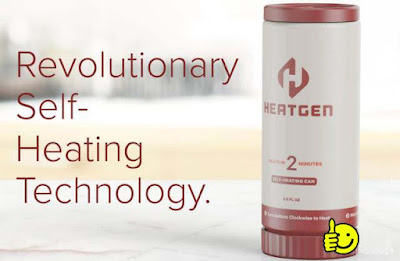In the rapidly digitized world, the technology of food packaging is also constantly improving. At present, researchers and scientists are exploring new packaging technologies that contribute to food safety. The following five innovative technologies may bring food packaging industry to the whole world. Brand new change.
Micro packaging
A research team at Texas A&M University has developed a "microfilm" that may become a new trend in the field of food packaging. It is reported that this material is composed of only water, soluble polymers and 70% clay particles. Compared with ordinary plastic, this packaging is not only environmentally friendly, but also has the preservation properties of glass, which can better preserve the foam in soda water.
This is just one of the new technologies in the thin film field.
Durethan is also a plastic film, which was developed by Bayer to prevent moisture, carbon dioxide and oxygen from breaking down food.
In addition, Nanocore has also developed a plastic embedded with nanocrystals, which can preserve oxygen in beer bottles and prevent leakage.
These lightweight micro-packaging technologies with outstanding preservation functions have very prominent advantages in food and beverages. If they can be applied to these fields in the future, it will bring a better experience to merchants and consumers.
Edible packaging
The second innovative packaging technology is edible packaging.
As the concept of green environmental protection and sustainability is highly regarded worldwide, food packaging that is difficult to degrade has become a major problem. More and more scientists are also studying edible food packaging.
Recently, a research group at Harvard University has developed a collection of edible food containers called "WikiCells". Its products are made from a variety of plants, such as fruits, nuts, grains and even chocolate. For example, they invented a lemon wrap with lemon juice, a spinach wrap with pumpkin soup, and a cherry wrap with melted chocolate.
In addition, there are many edible packaging, Japan has a kind of edible rice paper wrapped candy before.
In the long run, edible packaging will be the ultimate and truly effective way for food packaging to be sustainable. However, there are still very few edible packaging in practical application at present, and more edible packaging technologies are expected to appear.
Smart Packaging
In addition to micro-packaging and edible packaging forms, smart packaging technology full of technology is also being developed. At the University of Connecticut and Rutgers, a team of researchers working with Kraft Foods is trying to develop something called an "electronic tongue."
The "electronic tongue" can "taste the food" and detect the state of the food, such as whether it is contaminated or spoiled, through sensors embedded in the packaging.
The packaging will change color according to the quality of the food, thereby reminding consumers whether the food is still edible. It can be said to be very smart, but it is conceivable that the cost of this packaging form will be an important obstacle to application.
Freezing/Heating Packaging Technology
Another form of smart packaging is packaging technology that can automatically adjust the temperature. It is reported that the "miniature tool" used in the technology can absorb carbon dioxide from the atmosphere. When you press the activation button, the tool can release carbon dioxide, and in a few minutes, the temperature of the liquid in the tank can drop to 30 degrees Fahrenheit (minus zero). 1 degree or so).
Similar to this is the heated packaging technology. HeatGenie is an automatic heating component developed by HeatGenie and Crown Holdings that can heat products to 145 degrees Fahrenheit (about 62.7 degrees Celsius) in two minutes, but the component must be embedded in the bottom of the product packaging.
In short, these packaging technologies are all from the perspective of temperature regulation, and are more suitable for products with special packaging temperature requirements, but when they can be seen on the market, it will take some time for the public.
Water soluble packaging
The last item is water-soluble packaging technology.
MonoSol currently produces an edible delivery system called Vivos, which is a food bag that is easily soluble in water. Although it is easily soluble in water, users cannot taste the taste of the plastic film packaging when tasting food.
The company says the packaging technology is very friendly to liquid products such as beverage powders, cereals, soups, sauces and more.
On the whole, with the influence of technology, user needs, environmental protection concepts, etc., the technology of food packaging is constantly being upgraded, more and more in line with the demands of consumers, and more and more in line with the green concept advocated by global governments. It is also more intelligent, and many of them convert non-degradable packaging into degradable and edible packaging forms that use plants as raw materials.
However, they are still a long way from the real landing application, and there are many factors such as cost and mass production. We still need to give developers some time to see the new packaging technology come to life.





No comments:
Post a Comment